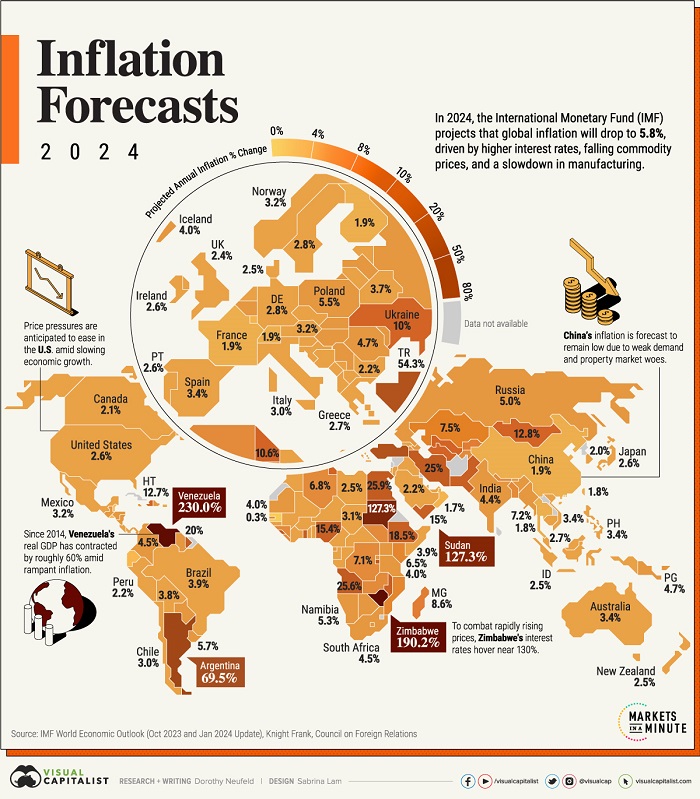Global economic prospects hang on a delicate balance, largely hinging on the path of inflation.
While inflation looks to be easing, there remains the risk of a second wave of price pressures driven by geopolitical conflicts and supply disruptions in the Red Sea. Adding to this, a stronger than expected labor market could drive consumer demand, pushing up higher prices.
This graphic shows 2024 inflation projections around the world, based on forecasts from the International Monetary Fund (IMF).
 In 2024, global inflation is projected to decline to 5.8%, down from a 6.8% estimated annual average in 2023.
In 2024, global inflation is projected to decline to 5.8%, down from a 6.8% estimated annual average in 2023.
In America, slower economic growth coupled with a softening labor market could ease inflation, which is forecast to reach 2.6% in 2024. While the Federal Reserve has signaled that the worst is over, unexpected momentum across the economy could cloud the outcome. As of November 2023, $290 billion in excess savings were held across American households, which may continue to spur consumer demand.
Over in Europe, inflation is anticipated to average 3.3% across advanced economies. Today, sinking natural gas prices and low GDP growth are keeping inflation expectations at bay.
China, the world’s second-largest economy, is contending with falling prices due to property market trouble, which drives about a third of the country’s economic growth. Amid sluggish economic activity, a manufacturing slowdown, and low consumer confidence, inflation is forecast to reach 1.7%.
What Could Cause Inflation to Re-Accelerate?
While inflation shocks driven from the pandemic appear to be over, key risks could drive up inflation:
- Geopolitical Pressures: Rising shipping costs due to the conflict in the Middle East and Red Sea could continue to escalate and energy prices could increase amid disrupted supply, driving inflation higher.
- Strong Consumer Demand: Accumulated excess savings could continue to fuel economies, leading central banks to remain hawkish. Persistently high wage growth—which increased about double the pre-pandemic average across advanced nations in 2023—could boost consumption and higher prices.
- Rising Housing Costs: Shelter makes up about a third of the Consumer Price Index, the biggest component overall. If prices accelerate, it presents key inflationary risks.
So far, the global economy has been resilient. While risk factors remain, inflation projections suggest that the path towards a 2% target is slow, but going in the right direction.
Source: www.visualcapitalist.com





































